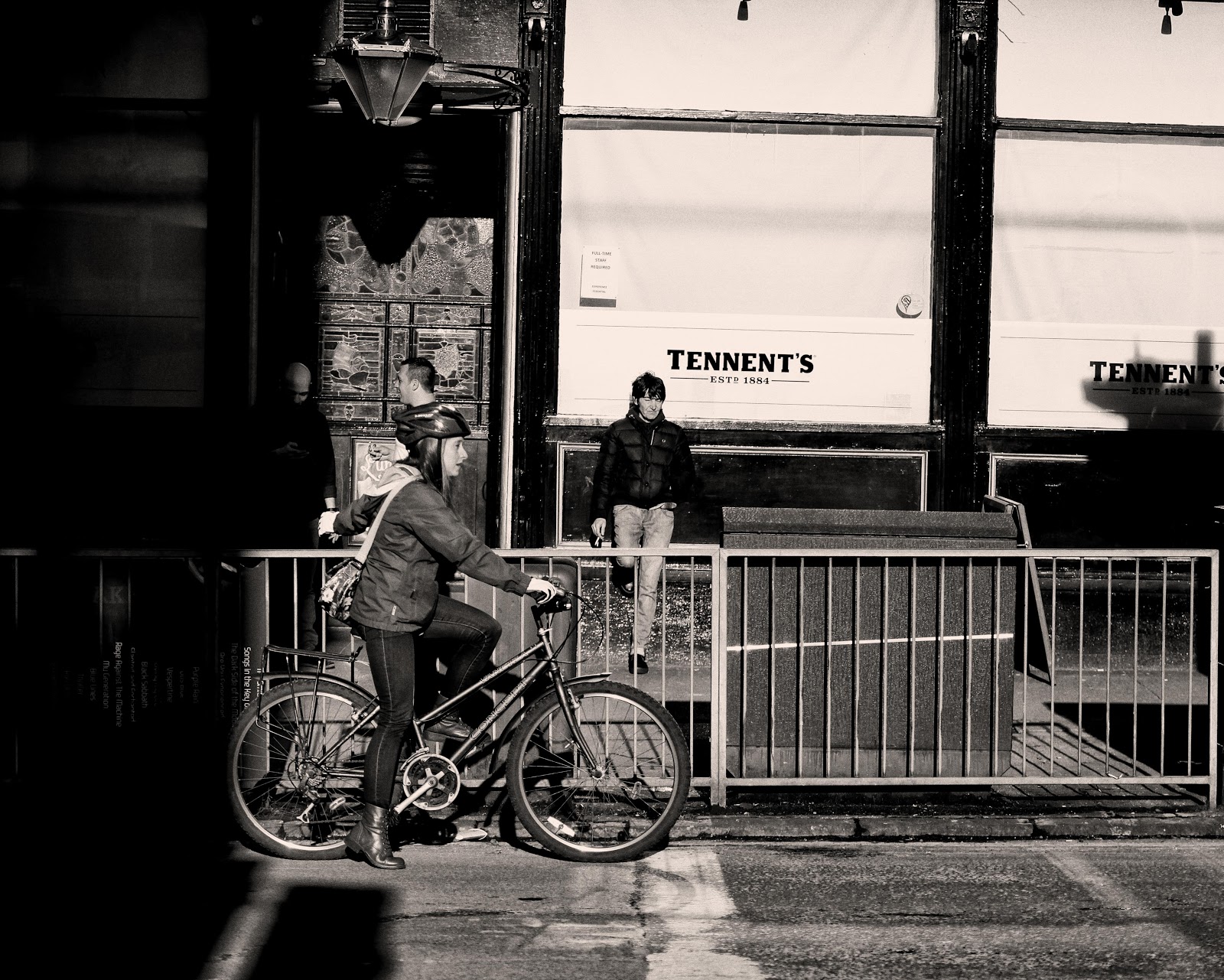As I’ve written about many times, cycling is a great way to get fit and be practical at the same time. The toughest part will be getting your human-powered Urban Assault Vehicle ready for action. But fear not! We aren’t going into uncharted territory. In fact, I’m going to show you just how easy it can be to build the Ultimate Pavement Bomber, on a budget.
Start With A Bike
Do you already own a bike? Good. You’re better off than most people. Chances are you’ve got one of these three types of bikes:
- Mountain Bike – fat/knobby tires, flat handlebar, possibly suspension fork and frame
- Hybrid – skinny tires, flat handlebar, usually a suspension fork
- Cruiser – fat tires, swept back bars, usually 1 speed (not always)
Any one of them can be pressed into service, with a few tweaks. If you already own a drop-bar road bike, then you’re pretty much there. Hybrids are awesome for shorter trips (less than 20 miles) because the upright riding position is good for visibility in traffic, but longer rides can be hard when you’ve only got one position to put your hands in.
Let’s assume the bike is in decent working shape: brakes and gears are adjusted and working, no loose hardware, and the bike is roughly the right size for you. If you have one of these rare unicorns, consider yourself blessed. If your bike needs work, then spend some time on Youtube learning how to adjust it, or bring it to a bike shop and have them do it for you (I recommend learning it yourself, for obvious reasons). Once your bike is in good working condition, it’s time to make its conversion to the dark side complete!
Rubber Meets the Road
Let’s focus on the lowly MTB. Almost everyone has one, even a crappy one. But MTB’s are made for bombing dirt trails, not parking lots and roads. So the first thing that needs to be addressed is tires.
Knobby tires are good for loose dirt, but they’ll only slow you down riding on the road. First, find out what rim size your bike has. 99% of them will be 26″ (ERTO 559) or 700C/29″ (ERTO 622). The “ERTO” number refers to the outer size of the rim in mm. Don’t just go by the inch numbers! There’s more than one 26″ size, and mountain bikes almost all use 559. The new “29’er” bikes use standard 700C rims, but they call them 29″ because….? I don’t know. Look for the ERTO number to be positive. It’s there on the sidewall somewhere.
Let’s say you’ve got a MTB with knobby 26×2.15″ tires. Just by swapping those out with road tires, the bike will become lighter, faster, more aerodynamic, and will handle much better on pavement. Believe me when I say this one change will make the most difference in how the bike rides.
You’ll want to get tires that are fairly tough, because roads are full of trash, rocks, goathead thorns, glass, etc. Generally, skinnier tires are faster, but the ride is harsher. Anything from 1″ wide up to 2.5″ slick tires are available. If you have a cruiser with fat smooth tires, they will work, but most likely aren’t that tough or that fast. I tend to go in the middle with 1.5″ tires so the bike is fairly quick, but still can handle occasional gravel.
Here’s my original bike (a cheap $150 Wal-Mart Schwinn) with 26×1.5″ Kenda tires and a second-hand rack: (it eventually died from a cracked frame)
 |
| Urban Assault Vehicle 1.0 |
Hit up Amazon or Ebay and find some street tires with smooth tread, and decent puncture resistance. A cheap favorite of mine is the Kenda Kwest (now called the Kwick), which rides well but isn’t that tough. I’ve also used Panaracer Pasela Tourguard tires, which are smooth and fast, but also not very tough. Higher-end tires like the Schwalbe Marathon Plus, Specialized Infinity Armadillo, and Continental Touring Plus are heavy-duty tires made for cross-country trekking. They will hold up under extreme conditions, but the durability comes at the cost of weight and price.
An alternative to expensive bomb-proof tires, you can buy Mr. Tuffy Tire Liners to put inside your cheap tires. They protect against flats as well as expensive tires, but you can swap them into a new set of tires when the old ones wear out. I swear by these! I’ve only had 1 puncture flat with Mr. Tuffy’s over 5 years (it was a drywall screw). They’re that good.
Smaller tires will require smaller inner tubes, too. Make sure to buy a couple of extra tubes for emergencies! No one wants to make the Call Of Shame© to get picked up because they had a flat tire.
The Most Important Thing
If you have a bike, then ride it. Even if it’s just around the block a few times, it will work your muscles and cardiovascular system. You don’t have to race, don’t have to set a record, and don’t have to do anything for now except ride the bike.
Next installment, we’ll talk about a basic need of practical cycling: how to carry stuff.

